BMW X5 vs BYD Tang – Differences & prices compared
Both models have their strengths – but which one suits you more?
Compare performance, efficiency, price and space directly: BMW X5 or BYD Tang?
Costs and Efficiency:
Price and efficiency are key factors when choosing a car – and this is often where the real differences emerge.
BYD Tang has a somewhat advantage in terms of price – it starts at 64300 £, while the BMW X5 costs 77100 £. That’s a price difference of around 12772 £.
As for range, the BYD Tang performs convincingly better – achieving up to 530 km, about 425 km more than the BMW X5.
Engine and Performance:
Power, torque and acceleration say a lot about how a car feels on the road. This is where you see which model delivers more driving dynamics.
When it comes to engine power, the BMW X5 has a to a small extent edge – offering 625 HP compared to 517 HP. That’s roughly 108 HP more horsepower.
In acceleration from 0 to 100 km/h, the BMW X5 is distinct quicker – completing the sprint in 3.90 s, while the BYD Tang takes 4.90 s. That’s about 1 s faster.
In terms of top speed, the BMW X5 performs distinct better – reaching 250 km/h, while the BYD Tang tops out at 190 km/h. The difference is around 60 km/h.
There’s also a difference in torque: BMW X5 pulls minimal stronger with 750 Nm compared to 680 Nm. That’s about 70 Nm difference.
Space and Everyday Use:
Whether family car or daily driver – which one offers more room, flexibility and comfort?
Seats: BYD Tang offers clearly perceptible more seating capacity – 7 vs 5.
In curb weight, BMW X5 is slightly lighter – 2240 kg compared to 2630 kg. The difference is around 390 kg.
In terms of boot space, the BMW X5 offers convincingly more room – 650 L compared to 235 L. That’s a difference of about 415 L.
In maximum load capacity, the BMW X5 performs to a small extent better – up to 1870 L, which is about 215 L more than the BYD Tang.
When it comes to payload, BMW X5 a bit takes the win – 705 kg compared to 575 kg. That’s a difference of about 130 kg.
Who wins the race?
The BMW X5 proves to be leaves the rival little chance and therefore becomes our DriveDuel Champion!
BMW X5 is the better all-rounder in this comparison.
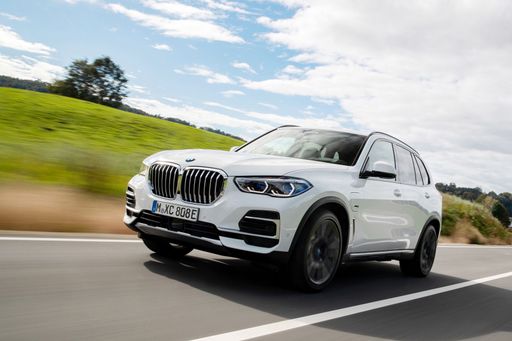
BMW X5
BMW X5
The BMW X5 embodies a perfect blend of luxury and performance, offering a driving experience that is both dynamic and comfortable. Its elegant design is complemented by a spacious, high-quality interior that prioritises driver and passenger comfort. Advanced technology features ensure that the X5 meets the demands of modern drivers, providing both entertainment and safety on the road.
details @ press.bmwgroup.com
@ press.bmwgroup.com
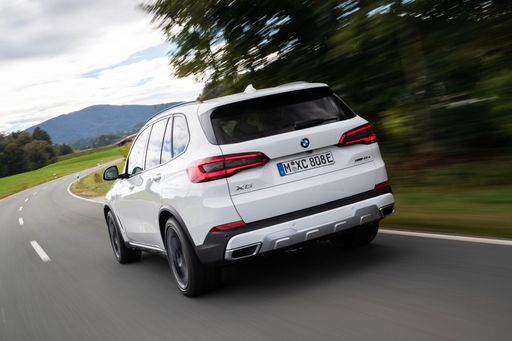 @ press.bmwgroup.com
@ press.bmwgroup.com
 @ press.bmwgroup.com
@ press.bmwgroup.com
 @ press.bmwgroup.com
@ press.bmwgroup.com
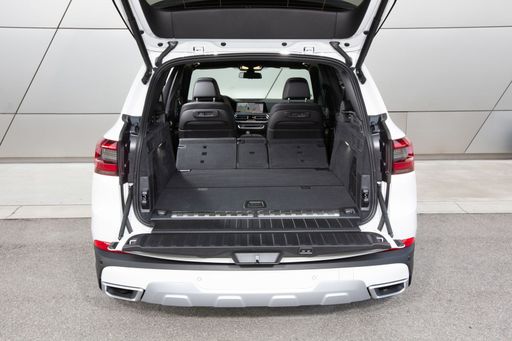 @ press.bmwgroup.com
@ press.bmwgroup.com
BYD Tang
The BYD Tang represents a bold entry into the competitive SUV market, blending cutting-edge technology with modern design aesthetics. Its spacious interior is complemented by high-quality materials and innovative features, making it a strong contender for families and tech enthusiasts alike. With an emphasis on sustainability, the Tang offers an eco-friendly driving experience without compromising on performance or luxury.
details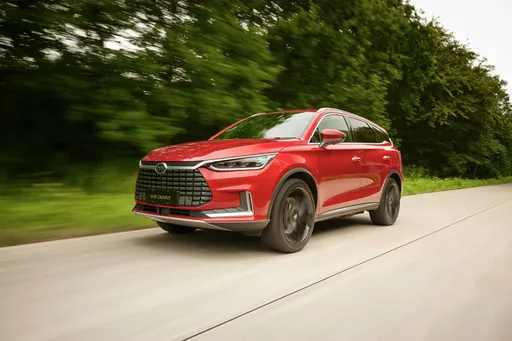 @ press.bydauto.be
@ press.bydauto.be
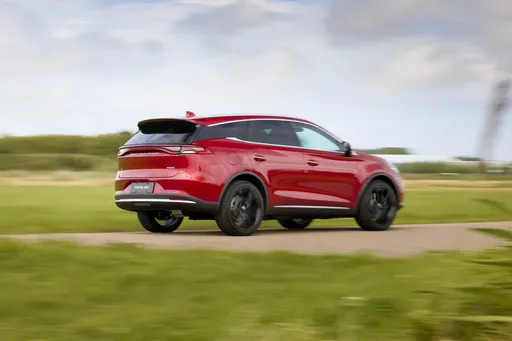 @ press.bydauto.be
@ press.bydauto.be
 @ press.bydauto.be
@ press.bydauto.be
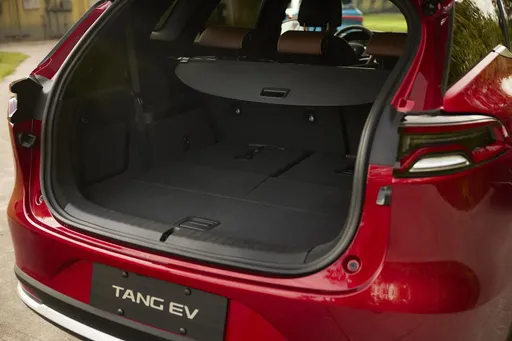 @ press.bydauto.be
@ press.bydauto.be
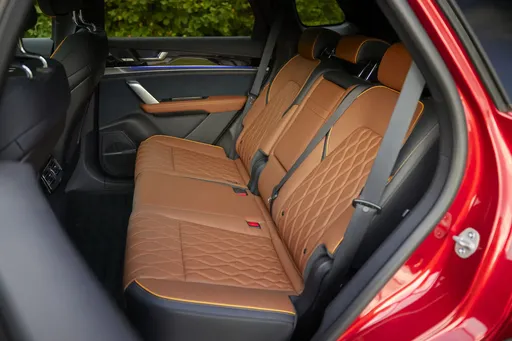 @ press.bydauto.be
@ press.bydauto.be

|

|
|
|
|
Costs and Consumption |
|
|---|---|
|
Price
77100 - 143500 £
|
Price
64300 £
|
|
Consumption L/100km
0.8 - 12.8 L
|
Consumption L/100km
-
|
|
Consumption kWh/100km
-
|
Consumption kWh/100km
24 kWh
|
|
Electric Range
105 km
|
Electric Range
530 km
|
|
Battery Capacity
25.70 kWh
|
Battery Capacity
-
|
|
co2
19 - 289 g/km
|
co2
0 g/km
|
|
Fuel tank capacity
69 - 83 L
|
Fuel tank capacity
-
|
Dimensions and Body |
|
|---|---|
|
Body Type
SUV
|
Body Type
SUV
|
|
Seats
5
|
Seats
7
|
|
Doors
5
|
Doors
5
|
|
Curb weight
2240 - 2495 kg
|
Curb weight
2630 kg
|
|
Trunk capacity
500 - 650 L
|
Trunk capacity
235 L
|
|
Length
4935 - 4948 mm
|
Length
4970 mm
|
|
Width
2004 - 2015 mm
|
Width
1955 mm
|
|
Height
1755 - 1765 mm
|
Height
1745 mm
|
|
Max trunk capacity
1720 - 1870 L
|
Max trunk capacity
1655 L
|
|
Payload
565 - 705 kg
|
Payload
575 kg
|
Engine and Performance |
|
|---|---|
|
Engine Type
Plugin Hybrid, Petrol MHEV, Diesel MHEV
|
Engine Type
Electric
|
|
Transmission
Automatic
|
Transmission
Automatic
|
|
Transmission Detail
Automatic Gearbox
|
Transmission Detail
Reduction Gearbox
|
|
Drive Type
All-Wheel Drive
|
Drive Type
All-Wheel Drive
|
|
Power HP
298 - 625 HP
|
Power HP
517 HP
|
|
Acceleration 0-100km/h
3.9 - 6.1 s
|
Acceleration 0-100km/h
4.90 s
|
|
Max Speed
233 - 250 km/h
|
Max Speed
190 km/h
|
|
Torque
540 - 750 Nm
|
Torque
680 Nm
|
|
Number of Cylinders
6 - 8
|
Number of Cylinders
-
|
|
Power kW
219 - 460 kW
|
Power kW
380 kW
|
|
Engine capacity
2993 - 4395 cm3
|
Engine capacity
-
|
General |
|
|---|---|
|
Model Year
2023 - 2025
|
Model Year
2024
|
|
CO2 Efficiency Class
B, G
|
CO2 Efficiency Class
A
|
|
Brand
BMW
|
Brand
BYD
|
Is the BMW X5 offered with different drivetrains?
The BMW X5 is available as All-Wheel Drive.
The prices and data displayed are estimates based on German list prices and may vary by country. This information is not legally binding.
